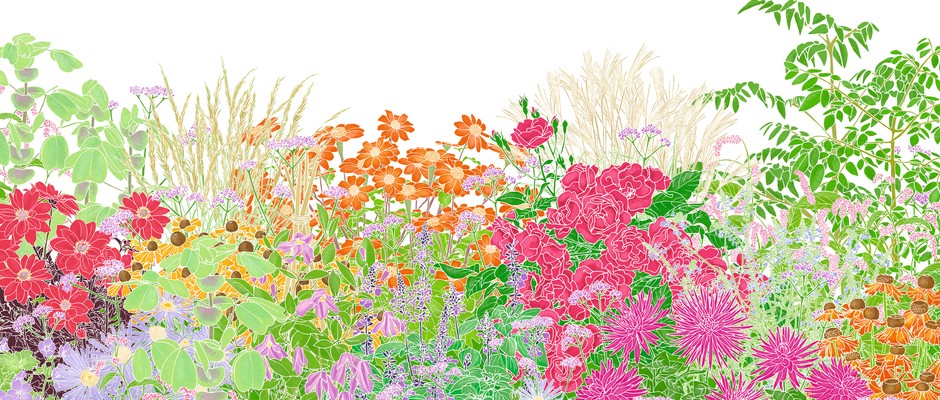
Late summer planting plan using tried and tested plants
This bold design for a late summer border by gardener Andrea Brunsendorf uses tried and trusted plants that will keep the show going in your garden border until the first frosts
Creating a late summer border is an exciting challenge. It needs vivid colours and textures, a wide range of plants, and a little luck with the weather. On top of all of that there is the hidden desire to make those colours last until the first frost arrives, maybe even longer. Gardener Andrea Brusendorf, who has created this bold design always uses plants that she has worked with before or has seen growing in other gardens. Those with flowers whose colour, height, spread and texture last well past the changing of the clocks.
Many of the plants that she has chosen for this border are ones that she grew in the Inner Temple Garden borders. She has spent many long summer days with them, learning their habits, revelling in their form. Here she explains in more detail how she came up with the plan and offers advice and time on when to plant and where to buy your garden plants from.
Andrea's top tips for designing a bold planting plan
- Late flowering annuals and perennials are in general sun lovers with strong colours and they need a full solar blast to prolong their flowering period.
- It may be difficult to imagine that yellow, orange, red and blue can harmonise, but they do because the greens and greys in their foliage and stems soften those strong contrasts. Also, the light during the late summer mellows the most vivid colours.
- Beware of using white (for instance Cosmos bipinnatus ‘Purity’) which I have found impossible to integrate successfully into yellows, oranges, reds and blues, because it is too dominant.
- Besides colour and structure, combination is another ruling I keep in mind when I decide how many plants to use and where to position them. A single clump, like three Dahlia ‘Bishop of Llandaff’, should be in proportion to the overall area, otherwise the border will seem bitty and too busy.
- Repeating colours, shapes and textures create rhythm and cohesion; for instance I will repeat the feathery texture of Miscanthus sinensis ‘Silberfeder’ with Salvia uliginosa and other grasses.
- There is value in transition or ‘see-through’ plants, like Verbena bonariensis and Persicaria orientalis, which will break up the solidity of clumps such as Helenium ‘Sahin’s Early Flowerer’, and add an ethereal note to a border that would otherwise look too chunky.
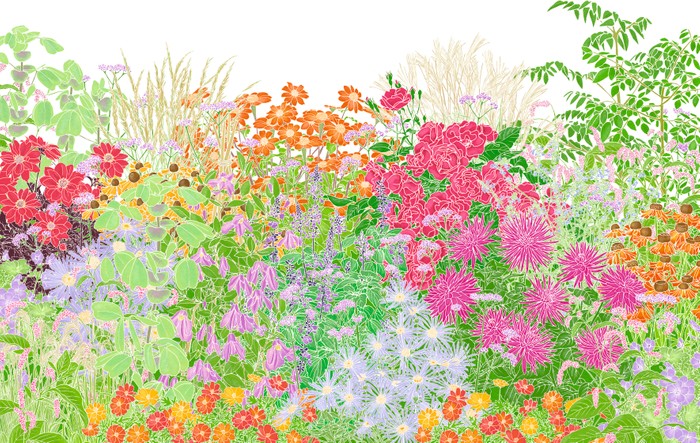
Best time to plant
September is a good time for planning and laying out a new border as the soil will still be warm. This is an excellent opportunity to spread masses of well-rotted compost or manure to improve the organic matter content of your soil. Double-digging is excellent, but just forking it in is better than not adding anything at all. To help you to visualise the eventual sizes of plant clumps, mark out a square with bamboo canes and then use smaller canes to estimate the spread of the individual plants.
Wait until spring before planting out the asters, heleniums and salvias – they hate cold, wet feet when trying to establish themselves. Sow Verbena bonariensis in September and over-winter in a frost-free environment with plenty of light. Cosmos and Tithonia rotundifolia ‘Torch’ are grown easily from seeds, even on a window sill, from early April onwards. Persicaria orientalis is best grown by scattering seeds in March/April in situ. Keep an eye on this one because it has the tendency to self-seed freely, but the large seedlings are easily spotted and they can be weeded out.
The tubers of Dahlia ‘Bishop of Llandaff’ are easily grown on in pots from March onwards in a warm setting. Other dahlias are less available, but cuttings can be grown on in a frost-free, light environment for planting out in June. Dahlia imperialis, a tree dahlia, is grown for its foliage, but with the luck of a hot summer and no early frosts it may flower for you in mid-December – and to protect it during the winter cover the root plate with a 20cm layer of dry wood chips. Don’t cut the grasses until late winter – or even early spring if the winter winds haven’t wreaked havoc.
Plant list and quantities used
Amicia zygomeris
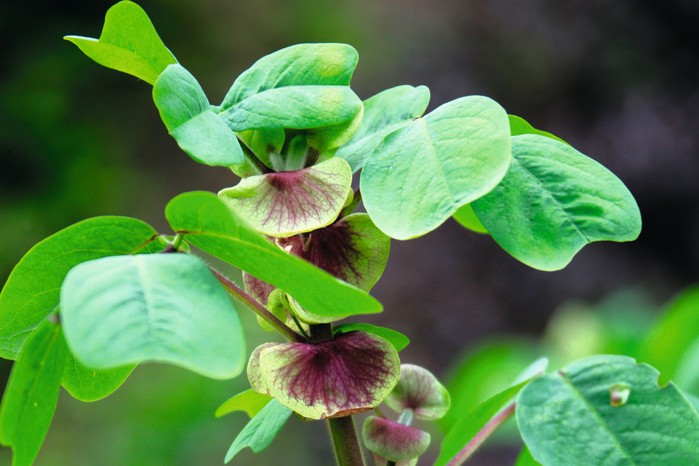
Tender perennial grown for foliage. Yellow flowers. Height 2.5m. Plants used x3
Tithonia rotundifolia 'Torch'
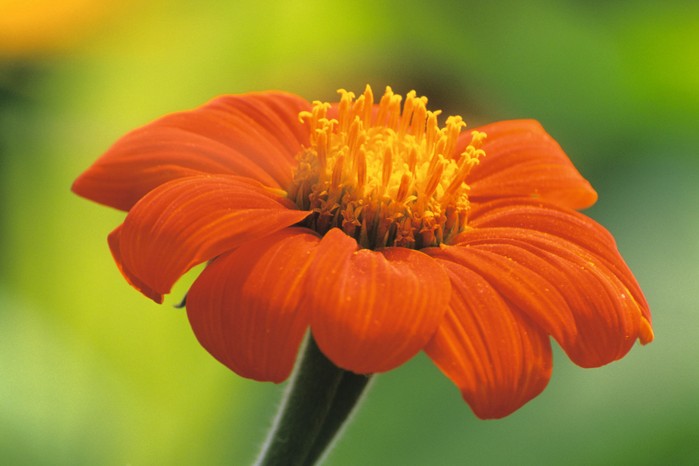
Annual with bright orange-red flowers. Height 2m. Plants used x10
Miscanthus sinensis 'Silberfeder'
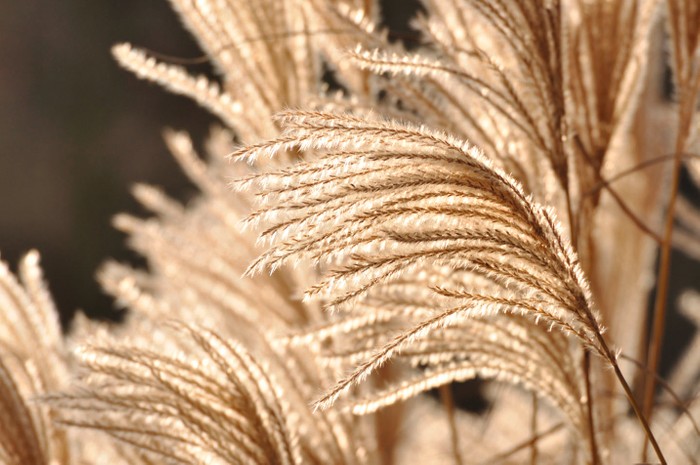
Grass with silver plumes. Height 2.5m. Plants used x3
Buy Miscanthus sinensis 'Silberfeder' from Thompson & Morgan
Dahlia imperialis
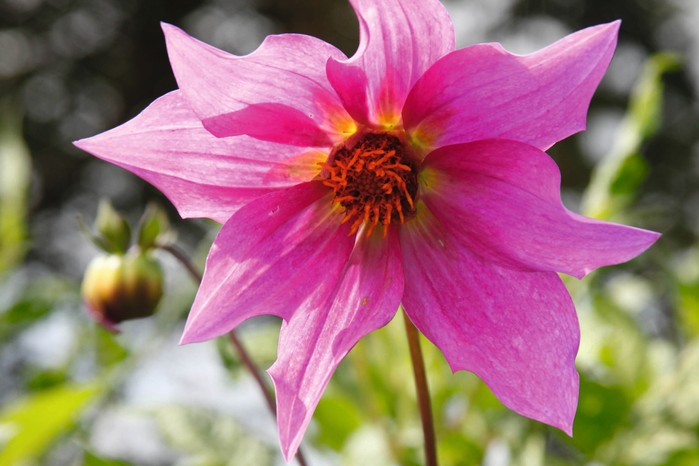
Tender perennial grown for foliage and bamboo-like stems. Height 4m. Plants used x2
Dahlia 'Bishop of Llandaff'

Tender perennial with dark foliage and vivid red blooms. Height 1.5m. Plants used x3
Calamagrostis x acutiflora 'Karl Foerster'
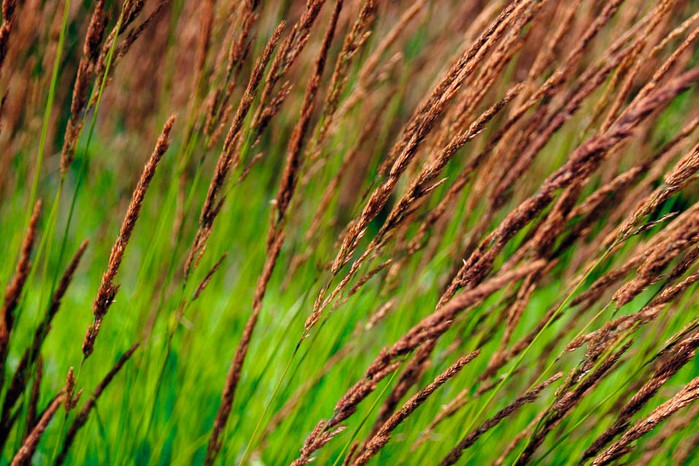
Grass with stiff, bronze feathery flowerheads. Height 1.8m. Plants used x3
Helenium 'Wesergold'
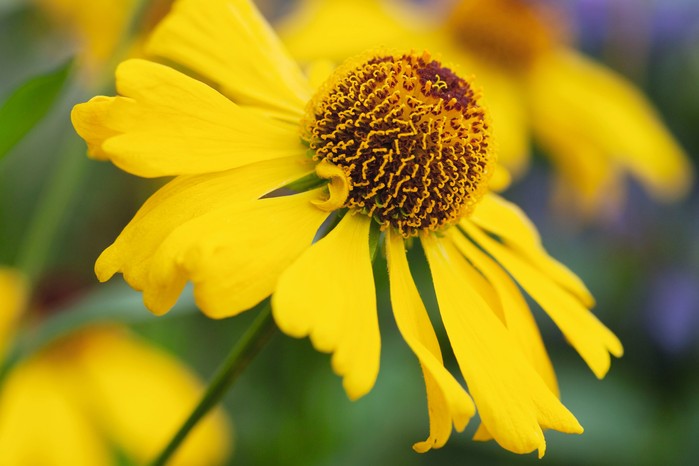
Perennial with clear lemon yellow flowers. Height 1.5m. Plants used x5
Salvia 'Indigo Spires'

Tender perennial, long blue flower spikes. Height 1.7m. Plants used x5
Don't miss our guide to salvias
Rosa 'Florence Mary Morse'
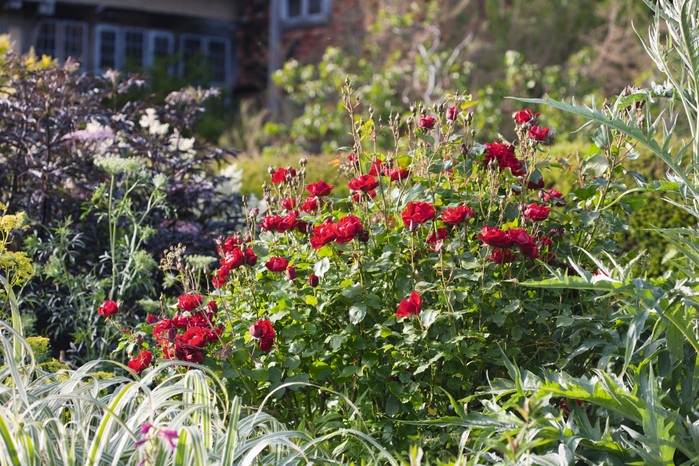
Vigorous Floribunda with red flowers. Height 2m plus. Plants used x1
Salvia uliginosa
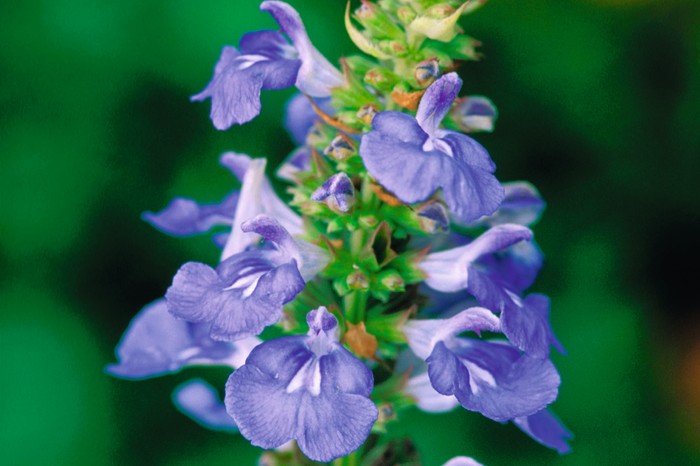
Tender perennial with sky-blue flowers. Height 1.5m. Plants used x5
Don't miss our piece on salvias to grow
Helenium 'Sahin's Early Flowerer'
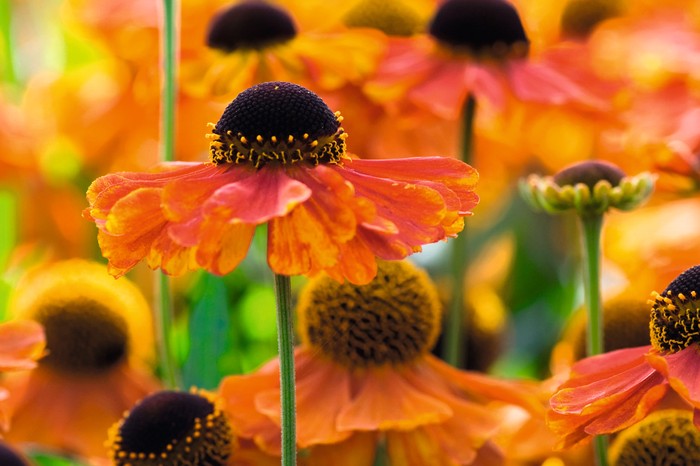
Perennial with reddish-orange flowers. Height 1.5m. Plants used x3
Geranium Rozanne (='Gerwat')
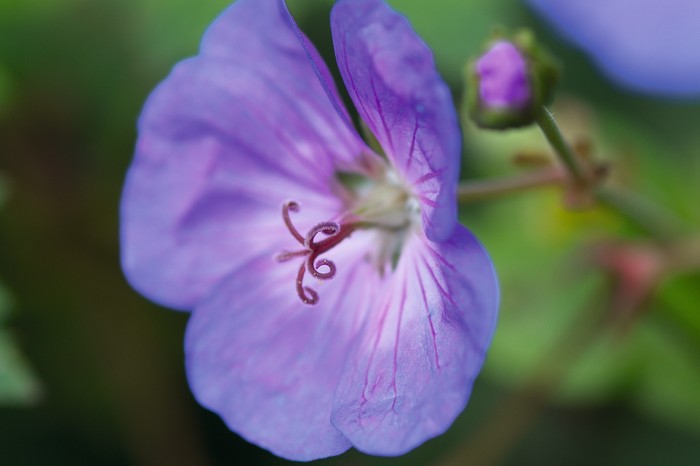
Perennial, violet-blue. Height 0.6m. Plants used x6
Here's our guide to hardy geranium
Clematis 'Alionushka'
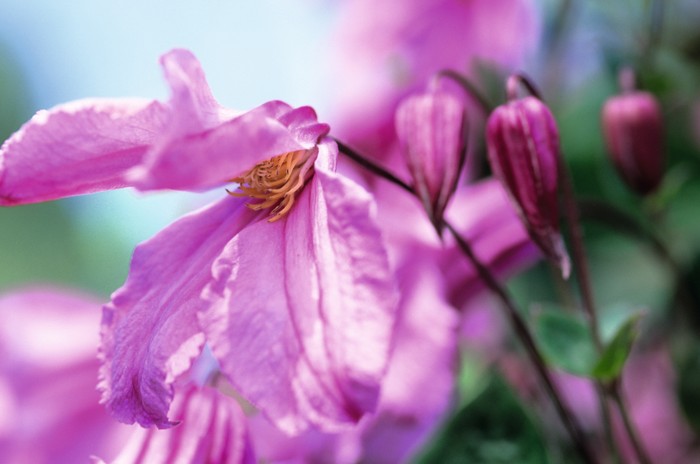
Climber, bell-shaped mauve pink flowers. Height 2m. Plants used x2
Dahlia 'Hillcrest Royal'
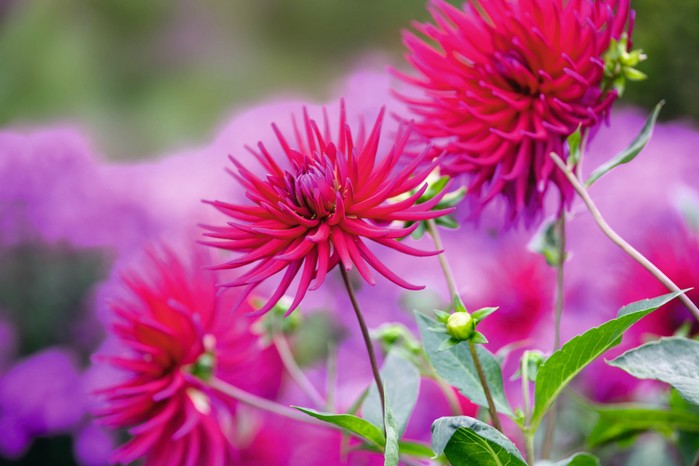
Tender perennial with glowing red-purple flowers. Height 1.5m. Plants used x5
Miscanthus nepalensis

Tender grass, gold-tinted feathers. Height 1.5m. Plants used x3
Persicaria orientalis
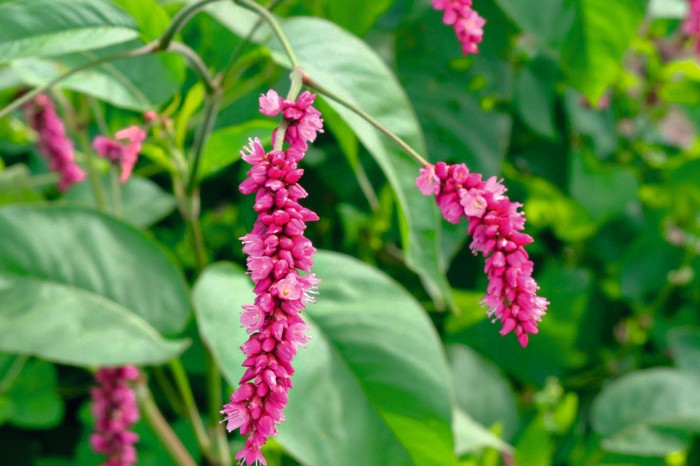
Annual with rose-red flower spikes. Height 1.2m. Plants used x7
Buy Persicaria Orientalis from Sarah Raven
Three golden rules
There are three vital tasks to do to keep your border looking good for as long as possible.
- The first is regular dead-heading to encourage the production of new buds, thus extending the flowering season right into the autumn.
- Secondly, apply a monthly feed during the active growing season.
- And thirdly, though possibly the most important, is to stake those plants liable to flop about after heavy summer rains when they are still in bud.
A bit more about staking...
Stake asters, dahlias and heleniums when they have reached 45cm. It is worthwhile tying-in each stem individually with a loop in a long circle from a cane at the rear. It is time-consuming but it keeps the plant within its circular support of strings. In our large borders I can spend three or four weeks staking all my perennials (and even some of my annuals) in the early summer and every year those wet and windy summer days confirm it was time well spent.
However, I have not found the need to stake Tithonia, salvias or the tree dahlias, which seem to have sturdy legs. The Clematis ‘Alionushka’ should have some form of support, such as an obelisk. In the garden here we use strong pea-sticks, the tips randomly woven together to create a tall dome for the clematis to delicately rise above its neighbours (and hide a manhole cover in the middle of my border).
Creating a colourful late-summer border is thoroughly satisfying, but if you have limited space it means this portion of your garden will be a little bare until June or July. If this is the case, consider succession planting – lift the dahlias in autumn and plant tulips together with forget-me-nots for colour in spring and early summer, and in the pockets reserved for the annuals under-plant with more of the same or with alliums and aquilegias.
Download a PDF of the border plan
Andrea Brunsendorf is director of outdoor landscapes at Longwood Gardens in Pennsylvania.
Sponsored content

Niwaki bundle worth £57 when you subscribe
Subscribe to Gardens Illustrated magazine and claim your Niwaki bundle worth £57
*UK only

Container Gardening Special Edition
The Gardens Illustrated Guide to Container Gardening.
In this special edition, discover colourful flower combinations and seasonal planting schemes for pots designed by leading plantspeople, and essential know-how for container gardening success. Just £9.99 inc UK p&pBy entering your details, you are agreeing to our terms and conditions and privacy policy. You can unsubscribe at any time.
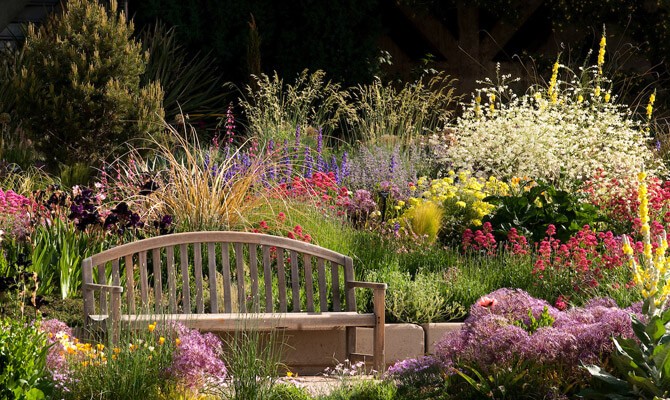
Gardens of the Globe
From botanical wonders in Australia to tranquil havens closer to home in Ireland, let this guide help you to discover some of the most glorious gardens around the world
By entering your details, you are agreeing to our terms and conditions and privacy policy. You can unsubscribe at any time.


